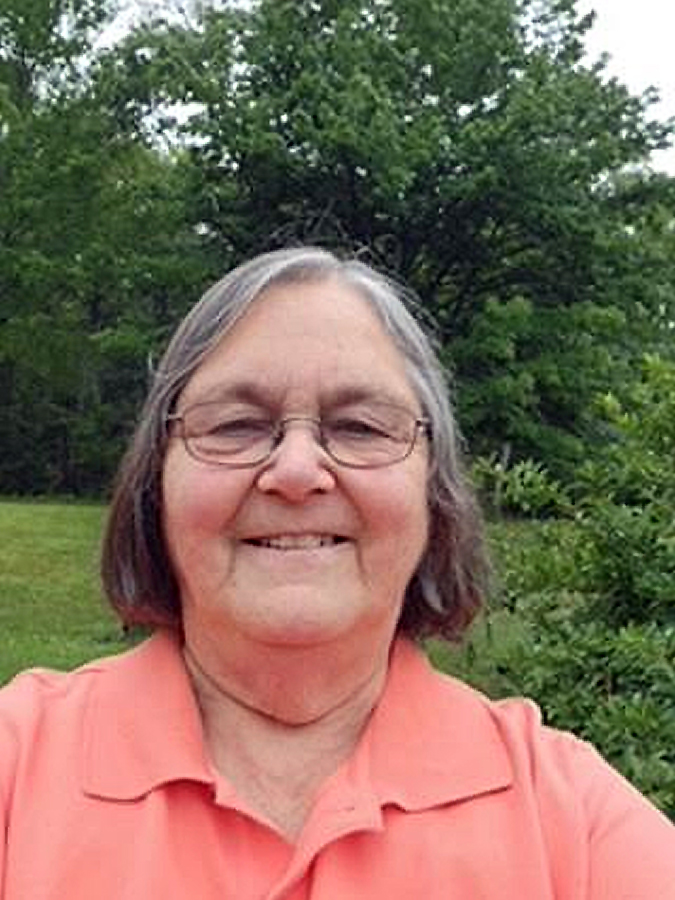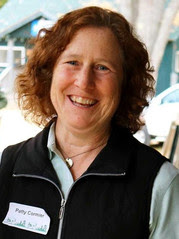
Maine Forestry Museum inducts four trailblazing women Into Hall of Fame
The Maine Forestry Museum honored four Hall of Fame inductees during the recent Logging Festival Days in Rangeley. The 2021 inductees are the first women to receive this honor. Inductees include Mary Dunham of Avon, Sarah Medina of Dixmont, Patricia Quinn of Norridgewock and Patty Cormier of Farmington, who also serves as Maine’s state forester and directs the Department of Agriculture, Conservation and Forestry’s Bureau of Forestry. The induction took place during the Logging Festival on July 17.
“Every day hardworking members of the forestry community in Maine contribute to our economy, supply markets near and far with world-class lumber, and preserve and protect our working woods as they have for generations. Today it is my honor to celebrate four outstanding women whose hard work has shaped the forest industry and our state,” said Gov. Janet Mills. “I join with everyone across Maine in congratulating Mary Dunham, Sarah Medina, Patricia Quinn, and Patty Cormier on being named to the Maine Forestry Museum Hall of Fame.”
“These four amazing people represent a wealth of experience and history in their field,” said Maine Forestry Museum Board Member Scott Stevens. “We could not be prouder to add them to the roster of legends in the Maine Forestry Museum.”
“I congratulate each of this year’s Maine Forestry Museum Hall of Fame inductees and thank them for their hard work and leadership,” said Maine Department of Agriculture, Conservation and Forestry Commissioner Amanda Beal. “I am especially proud to see Patty Cormier included as an inductee. Patty rises to every challenge and Maine is very lucky to have her as our state forester.”
Dunham of Avon logged with horses for more than 10 years. She worked with her husband, Bruce Dunham, on woodlots in Avon and the Rangeley area, starting around 1975. They cut a lot of softwood during the spruce budworm infestation in the following years. As landowners, they tried to salvage some value from the trees being killed by these insects.
Dunham was often driving a single horse and worked with many different ones over the years. Her favorite was a Percheron named Charlie. She liked Charlie best because he would stand quietly and not make a move until she told him to. Charlie weighed in at over a ton. Dunham said that if it was a short distance from the stump to the landing, she could yard about a wheeler truckload in a day (approximately 8-9 cords). Sometimes, she would twitch with a single horse to the main trail if it was further to the yard. Then Bruce would take multiple trees from there to the main yard with a pair of horses and a “yarding rig” on wheels.
Dunham grew up on the west coast of the U.S. Her father was in the military, and they moved around. She described her upbringing as suburban and not around horses or the woods. Bruce showed her the basics of driving and handling the horse, and she learned by experience after that. She remembers going to work after 30 inches of snow fell in one storm and thought she would never get through this.
She said, “You start out with a short, eight-foot log that the horse can move. Once the horse starts a trail with that log, you tread down a path, and after a while, you can keep going.”
Working with the horse was physically challenging but also physically rewarding. Dunham said that she usually just had on a turtleneck, wool sweater, long johns and wool pants and was warm even on the coldest winter days. Because the horses were in such good physical shape from work, she had a lot of success in pulling contests at Maine fairs.
Dunham learned that the job included a sense of direction in the woods that she never had before and about the different species of trees and how each has other characteristics, including different weights and smells. She said some of her greatest satisfaction during this career was the relationship she built with the horse, the pride in the good job that horses can do on a woodlot and the profit margin they saw instead of when they had heavy equipment payments.
After her logging career, the Dunhams had a successful seafood business in Avon and Rangeley. They still reside in Avon, and Dunham is employed in the town Office.
Medina of Dixmont is a 1972 graduate of the University of Maine with a B.S. in forest management. She was the first woman to pursue a forest management degree at UMaine and the first woman employed as a field forester in Maine. Medina retired in 2019 after a gratifying career with Seven Islands Land Company, working in both the Rangeley region and northern Maine. She enjoys three seasons at camp in the Narrows at Richardson Lake and winters on Maine’s snowmobile trails.

Medina’s early experience included typical foresters’ duties. It gave her the essential foundation for all the work she did throughout her career. Over time, her job evolved to work in recreation administration, regulatory compliance, taxation, communications, land ownership and policy. Medina administered recreational management on lands managed by Seven Islands. She worked with state agencies to manage natural resources and has served on numerous advisory committees and task forces that influence and enhance state land use and regulatory policy and/or enhance forest management.
She currently serves on the Rangeley Lakes Heritage Trust Board of Directors, Baxter State Park Scientific Forest Management Area Advisory Committee, the Maine Indian Tribal-State Commission, the Maine Board of Licensure of Professional Foresters and Project Learning Tree Steering Committee. A Lifetime member and Gold Award Girl Scout, she has experience in all aspects of Girl Scouting, from Brownie to Council president, and recently retired from the Board of Directors of Girl Scouts of Maine. Medina was recognized as the 2015 Distinguished Alumnus, UMaine School of Forest Resources. She received the 2010 President’s Award and the 2018 Abby Holman Public Service Award from the Maine Forest Products Council. In 2008 she was recognized by the Northern Loggers Association for outstanding service to the forest industry.
Quinn of Norridgewock has over 30 years of experience in forestry in Maine and currently serves as the harvest and transportation manager for the Three Rivers District of the Weyerhauser Corporation. The responsibilities of that position include the planning and execution of wood products harvests on Weyerhaeuser lands primarily west of the Kennebec River in Franklin and Somerset counties. Quinn supervises a team of three professional foresters, building long-term relationships with logging contractors, administering harvest contracts, ensuring compliance with Best Management Practices, all government rules and laws regarding the harvests, and delivery and marketing of the forest products.

She grew up in Connecticut and took an interest in outdoor activities like camping early on. She served three years active duty in the United States Marine Corps before earning her associate degree from Paul Smith’s College and then her bachelor’s degree in forest management from UMaine. She went on to earn her MBA at Thomas College.
With the Army Reserves from 1991 to 2006, Quinn continued her military service and then with the Maine Army National Guard until she retired as a Master Sergeant (E-8) in 2018. Quinn’s first full-time forestry position was with Boise Cascade in Rangeley, commencing in June of 1990. She was a field forester overseeing pre-commercial thinning and hand logging crews primarily. Some of her early mentors were Sammie Spaulding, Stan Bartash, and John Ackley.
Quinn says that the most satisfying part of her work has been improving timber stands and setting up large parcels of land for future growth. She adds that commercial forest management is done on a scale that is hard for some people to understand, and they may not recognize beneficial forest management practices at first glance.
In 2014, Quinn was recognized for her professional efforts by being named the Maine Forest Products Council Forester of the Year. She is understandably proud of this appreciation for her work in the forests of Maine. Quinn works out of the Bingham office for Weyerhaeuser and resides with her husband Mike.
Cormier of Farmington is the Maine state forester, the first woman to hold this position. As Maine’s forest service director, she oversees three divisions in the Department of Agriculture, Conservation and Forestry’s Bureau of Forestry: Forest Policy and Management, Forest Protection (Maine Forest Rangers) and Forest Health and Monitoring.

Cormier spent 20 years (1999-2019) as a district forester in the Maine Forest Service. In this role, she conducted outreach and education about all things relating to Maine forestry to the public, landowners, loggers, and other foresters. She spent the first eight years of this career in Midcoast Maine and the latter 12 in the Western Mountains. Other duties included education, intervention and enforcement of forestry-related laws, including providing expert witness testimony in timber trespass and theft cases.
Cormier attributes her interest in a forestry career to her upbringing in Kingfield, where her parents operated a set of sporting camps near Tufts Pond. She was influenced by her experiences there, enjoying fishing, teaching camp guests about the local forest, and putting up firewood with her father.
Two summers spent working at Baxter State Park doing trail work with the Youth Conservation Corps also helped guide Cormier to a career outdoors. She is one of three Baxter State Park Authority members. She entered Elizabethtown College in Pennsylvania as a pre-med student, then quickly became one of two forestry students at that college. The next year, she transferred to UMaine because it had a larger program with more forestry students. She graduated with her B.S. in forest management.
Before her career as a District Forester, Cormier worked 10 years for Georgia Pacific Corporation as a forest inventory supervisor and landowner assistance forester. She supervised up to 17 interns performing forest inventory on GPC lands in Hancock and Washington counties. She also provided forestry management assistance to landowners, including writing forestry plans and supervising harvests.
Cormier has had a long and extensive public service career in firefighting and Emergency Medical Services. She is an active Advanced EMT with NorthStar Ambulance and a certified firefighter with Farmington Fire and Rescue Department. She has been on six different two-week deployments fighting wildfires in western states and Quebec province, a part of her career which she has found particularly exciting.
Cormier noted that her woodland firefighting career started when she was working for GPC in Washington county. When she initially expressed interest in helping the local fire chief, he told her that the firefighters’ auxiliary baked cookies and cakes. She replied that she didn’t want to bake, she wanted to help fight fires! She got her chance and said that the same chief turned out to be a great mentor.
In addition to her service to her community and the people of the state of Maine, Cormier is particularly proud of having hiked the entire Appalachian Trail in five months, before there were cell phones and technology to rely on.
The Maine Forestry Museum is committed to preserving the rich cultural heritage of forestry and conservation in the state so that it may be shared with generations to come. The museum is located at 221 Stratton Road, Route 16, in Rangeley. For more information visit maineforestrymuseum.org.